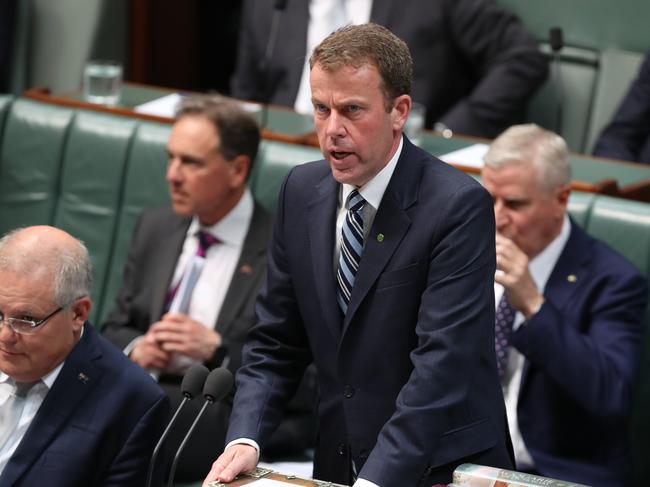NAPLAN analysis shows Year 6 treated as a ‘gap year’
A NAPLAN analysis has revealed schools and students treat their final year at primary school as a ‘gap year’ amid calls for an overhaul of the national testing system that could reverse Australia’s sliding grades.
Exclusive: Australian students are slipping in the transition from primary to high school with an analysis of NAPLAN showing schools and students treat Year 6 as a ‘gap year.’
It comes as the controversial national diagnostic tool is under fire for not being implemented properly, and instead forcing schools to compete with each other and educators to ‘teach to the test.’
The Victorian, NSW, Queensland and ACT governments today released the Interim Report for their independent joint review of NAPLAN stating there are major issues with national testing in the current form.
Experts also point to the discrepancy between NAPLAN scores and the very bleak OECD assessment, suggesting that NAPLAN needs to be reviewed.
Grattan Institute school education program director Dr Peter Goss said national testing is needed because not every school can self-assess.
“National coverage also means that the test has enough power to pick up small changes; four weeks extra learning a year would be enough to reverse the 12-month decline we have seen in PISA (OECD’s 2018 Programme for International Student Assessment), but you can’t pick up improvements that small without a large scale standardised test,” he said.

Minister for Education Dan Tehan dismissed the interim report findings: “This interim report from a minority of states is a distraction. My focus is on implementing the Gonski reforms to improve student outcomes.”
The topic has been put at the top of the agenda of the Education Council next week between state and federal education ministers.
The slide in secondary school is an example of the kind of trend that can be picked up from national data, with experts saying we are losing students when they get to high school.
An exclusive study of the five-year NAPLAN data indicates there are signs of improvement, particularly in younger years, likely down to a shift in teachers moving from an inquiry-based style of teaching to explicit learning; where students are clearly shown what to do and how to do it rather than exploring ideas.
The national analysis, done by Dr Goss for News Corp, reveals strong gains can be seen across all subjects in Year 3 and Year 5 nationally while writing drops off in Year 9 and reading takes a hit in year 7.

Dr Goss said average scores have actually improved, particularly in the last five years.
“About half of the gains – slightly more in numeracy, slightly less in reading – came in the last five years since 2014. There are even signs that the improvements in Years 3 and 5 – which started early in the decade – may now be flowing through to better Year 7 and 9 results,” he said.
“But most of the improvements we are seeing though are in Year 3 and Year 5 – year 7 is basically flat.”
He said the pockets of improvement could be that explicit teaching is filtering back into schools.
“There are broadly two different styles of education and Australia has gone a long way down inquiry-based learning and less explicit-based teaching, particularly in the early years.
“I suspect what we are seeing is an increased amount of explicit teaching that is laying a strong foundation.
“At an Australia-wide level we are heading generally in the right direction but not in every subject, not at every year level and over a five-year period only a few of those improvements are big enough to be significant.”
MORE EDUCATION NEWS:
Why Aussie students are stuck in the Dark Ages
Unprepared teachers only ‘one chapter ahead of kids’
Why our schools are falling behind

He said across the country South Australia, Victoria and NSW lifted their performance in the last five years while Queensland and Western Australia’s trajectory has stayed the same over the last 10 years.
“There are some signs, as we have seen in PISA, that the declines might actually be bottoming out … there are substantial improvements in a few places but overall it is not good news.
“Schools seem to be treating year 6 as a bit of a gap year; some schools do lots of leadership things, big graduations and this may be taking away from more traditional learning,” he said, adding that in year 6 there is not another NAPLAN test “to keep schools honest.”
Director of the Gonski Institute for Education Adrian Piccoli said the Australian education system was losing students when they hit high school.
“Year 3 results have been reasonable but by the time we get to high school we are seeing problems in our performance.
“There is something going on between primary school and high school. PISA shows us that 15-year-olds in Australia are not really taking school that serious.
“We need to look at the way secondary school is delivered and how we transition from primary to high school because we are losing them in year 7, 8 and 9.
“They lose interest in the way high school is being delivered. We are losing them to technology.”
Originally published as NAPLAN analysis shows Year 6 treated as a ‘gap year’
